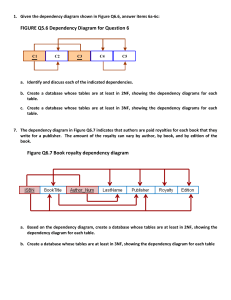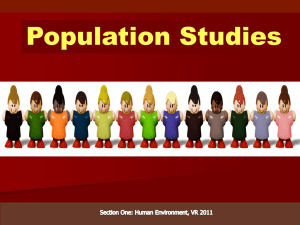Canada`s Population Pyramid
advertisement
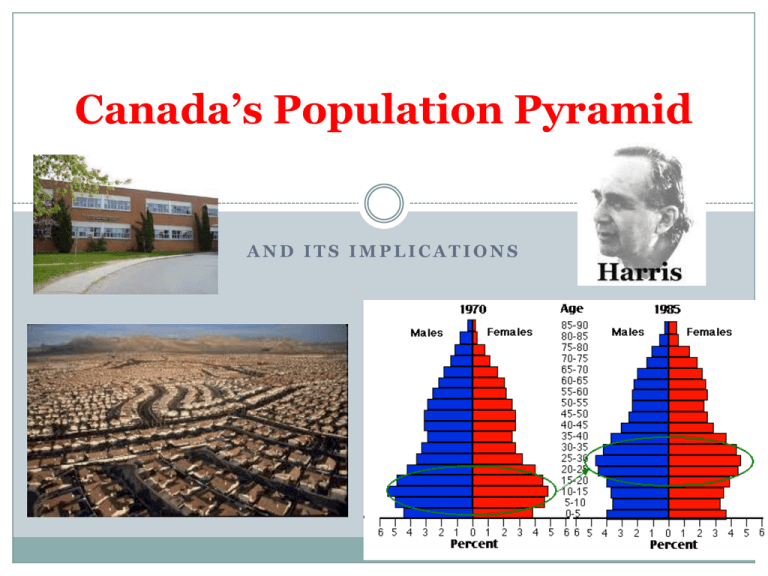
Canada’s Population Pyramid AND ITS IMPLICATIONS Examine the following: In groups of 2-3… What do you see as challenges or pros and cons for Canada in the next 20 years based on your observations of the two pyramids? Canadian Population Patterns 1. More than ½ of us live in large cities, why? • • Pattern began in the 1920’s when farm workers moved to cities to find work in factories Immigrants settle in cities because work is easier to find Canadian Population Patterns 2. The majority of Canadians live in Southern Canada • • The strip from Windsor, Ontario to Quebec City, Quebec is about 1100km long, but contains nearly ½ of the total population of the country Yukon, NWT, and Nunavut have 39% of Canada’s total land, but only about 0.3% of the total population Let’s make a Cartogram of Canada On graph paper each square represents 100 000 people Try to make map look like the shape of Canada Canadian Population by Province 2014 You just need chart paper and pencil Does yours look like this? Population Patterns- The Baby Boom In 1966, more than 50% of the population of Canada was under the age of 24. Large population of young people led to a rapid social change. Started in 1950’s http://www.youtube.com/watch?v=9SDlhORJLKg (11:12) ‘Youth Culture 1950s’ Birth Rates & Death Rates post WWII Birth Rates and Births in Canada 1921-1971 Year 1921 1926 1931 1936 1941 1946 1951 1956 1961 1966 1971 Birth Rate 29.3 24.7 23.2 20.3 22.4 27.2 27.2 28.0 26.1 19.4 16.8 Live Births 265 000 240 000 247 000 227 000 263 000 344 000 381 000 451 000 476 000 388 000 362 000 Results of the Boom 1. Wealth and Prosperity: -Canada became a source of natural resources during the war, this continued -American companies invested $12 billion between 1945-1960 -Marvin Harris developed the Cultural Materialist school of thought around the idea that economic factors change society Results of the Boom 2. Suburbia: Limited urban land = subdivisions outside of city limits = cars = manufacturing jobs = Pleasantville! https://www.youtube.com/watch?v=wT_A9PFOY18 (3:41) ‘1950s Homelife suburban Sprawl and the baby boom’ Results of the Boom Education: 1950s and 60s schools built in huge numbers. Mid to late 60s new Universities and Community colleges had to be built Change from authoritarian education (3 R’s) to progressive education (student driven) Ontario’s college system started in 67, St Lawrence opened in 1969 https://www.youtube.com/watch?v=yC83eDLuh3c (1:47) ‘Dr Spocks Baby and Child Care- Revised by Dr. Robert Needlman from MetroHealth’ Schools, schools, schools Article- Dr Benjamin Spock Dependency Ratio Age-population ratio of those typically not in the labor force (the dependent part) and those typically in the labor force (the productive part). It is normally expressed as a percentage: (# of people 0-14 + # of people 65+) Dependency Ratio= _______________________________ # of people aged 15-64 Dependency Ratio • The (total) dependency ratio can be decomposed into the child dependency ratio and the aged dependency ratio: Number of people aged 0-14 Child dependency ratio=____________________________ Number of people aged 15-64 X 100 Number of people aged 65 and over Aged dependency ratio= ___________________________ X 100 Number of people aged 15-64 Lets do it- Calculate the following… According to the World Bank – these are Canada’s stats in 2011. • Total population = 34 500 000 • Aged 65 and above = 4 981 800 • Young, 0-14 • Aged 15-64 = 5 623 500 = 23 894 700 Calculate Child, Old and Total Dependency Ratios Brainstorming- Dependency Ratio 1. Make a prediction for the future dependency ratio of Canada. What will happen to the proportion of youth, senior and working age populations? Why? 2. What are some of the potential impacts of high dependency ratios? 3. Suggest some possible ways of relieving the burden of an aging population. Future Implications As the ratio increases there may be an increased burden on the productive part (you soon) of the population to maintain the upbringing and pensions of the economically dependent. http://www.youtube.com/watch?v=x4r0S5qoIXc (2:09) ‘HOW AN AGEING POPULATION WILL CHANGE THE WORLD - BBC NEWS In partners or groups of three: • Brainstorm what you imagine your future will look like. •When will your career start? •How many careers do you imagine you’ll have? •When will retirement start for you? •What will it look like? What activities will you be doing? http://archives.cbc.ca/economy_business/the_media/clips/16743/ (5:44) ‘Sherry Cooper- the new retirement’ Doczone- Generation Boomerang • How the Baby Boomers continue to affect change via their choices and their children’s choices. • The impact of the Echo Generation and Gen Y. • http://www.cbc.ca/player/Shows/Shows/Doc+Zone/ 2011-12/ID/2167363287/?sort=MostPopular (45:11)
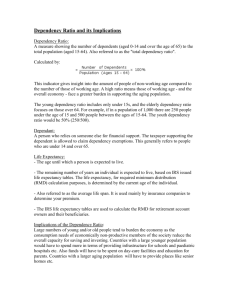


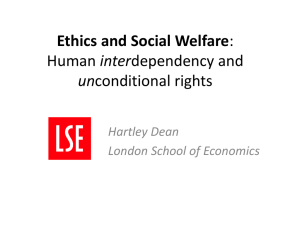

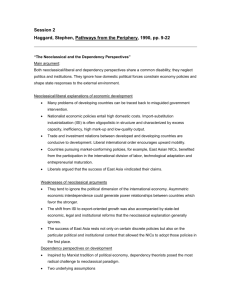

![[#KULRICE-8616] Wrong slf4j-log4j12 version resolved](http://s3.studylib.net/store/data/007509464_1-ab9bda0784a3e51fb3e38df882af1877-300x300.png)
